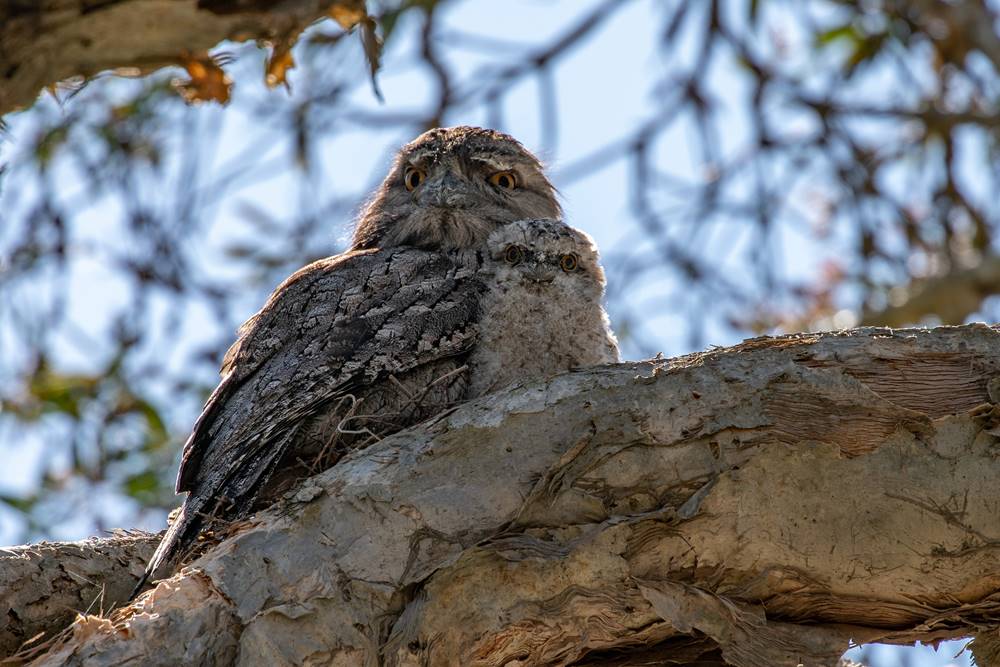
Description
Tawny Frogmouths are medium-sized, bulky birds with a large broad head and a relatively short tail. The plumage on crown, upperparts and breast provides superb camouflage against bark and comes in a range of shades of mottled grey and chestnut brown, streaked with black.
There is a common misconception that Tawny Frogmouths are owls. This is not true! While both are nocturnal, owls hunt by grasping prey in their strong talons. Tawny Frogmouths catch their prey using their beaks. Tawny Frogmouths have a distinctive triangular-shaped beak, wide at the base and coming to a hooked point, with feathery bristles around the top of the beak. They have a strong bite and sharp edges to the beak, which is larger than most other birds, relative to body size.
Behaviour
Tawny Frogmouths inhabit most areas in Australia, with variations in colour and size in different regions. They prefer open Eucalypt forests where they can hunt insects on the wing, but they also inhabit urban areas. Tawny Frogmouths are sedentary and pairs nest in the same area each year. They mate for life.
Tawny Frogmouths are nocturnal. During the day they roost (sleep) stiff and upright with heads upturned and eyes narrowed to slits, looking like a broken branch. They roost on a branch close to the trunk of a rough-barked tree and are very difficult to see
Diet
Tawny Frogmouths take prey both from the ground and on the wing (in the air). Like Kookaburras, they perch and watch for movement, then swoop down and scoop the insect up. Their diet includes insects such as moths, cockroaches, beetles, centipedes, crickets, caterpillars and spiders. They will also take small birds, frogs, mice and microbats. Larger prey is held in the bill and beaten against a branch before swallowing.
Most of their hunting is done in the first few hours after dusk and just before dawn.
Chicks
When first hatched, chicks have thick, fluffy white down. By two weeks they develop pale-grey down and pin feathers start to emerge on their wings and tail. At four weeks their adult feathers are emerging, and they leave the nest and perch. By five weeks they are fledged and learning to fly and hunt. The younger the chick, the shorter the tail.
If you find a Tawny Frogmouth chick on the ground, the best course of action is to call WIRES. A WIRES member will assess the chick for injuries and decide what further action is required. The chick may be injured or too young to be out of its nest, or it may be a fledgling that is just learning to fly.
WIRES volunteers will attempt to reunite chicks with their family wherever possible as this is by far the best option for both the chicks and the parent birds. It is possible to reunite a Tawny Frogmouth chick with its parents; however, this can depend on many different factors so to ensure the chick has the best chance of survival, please call WIRES as soon as you find a chick.
To access 24/7 rescue advice and assistance for sick, injured and orphaned native animals call 1300 094 737, or fill in the online rescue form.
Sign Up for Wildlife News
Stay in touch and get our regular rescue stories, WIRES updates and a free copy of our 15 Ways to Help Wildlife ebook
